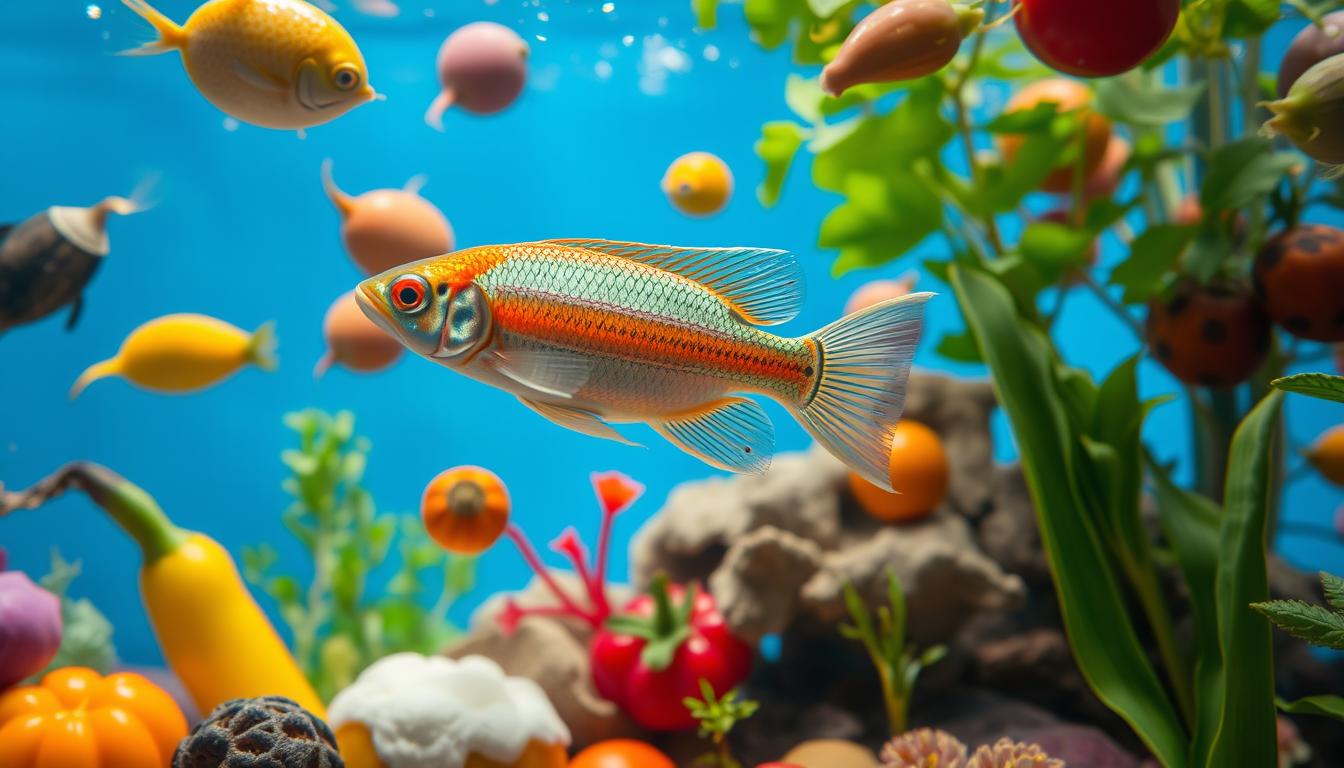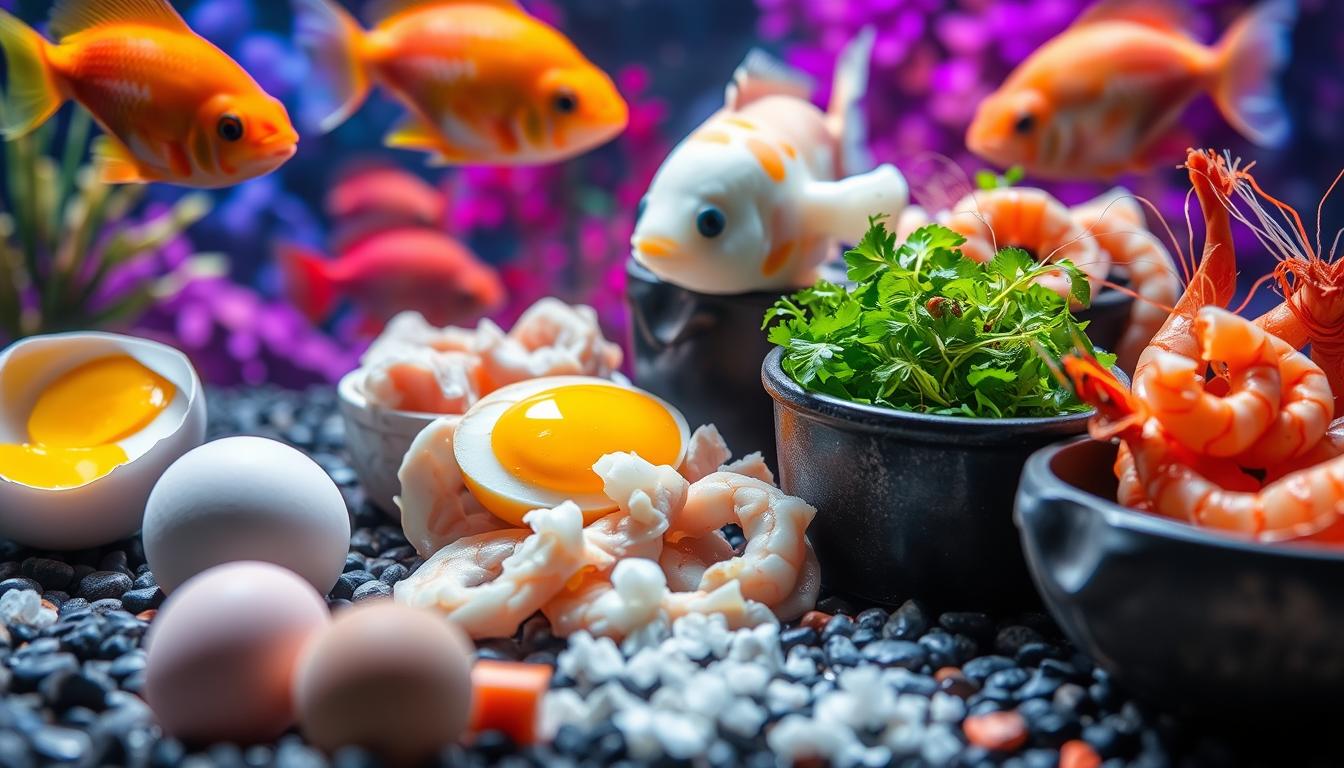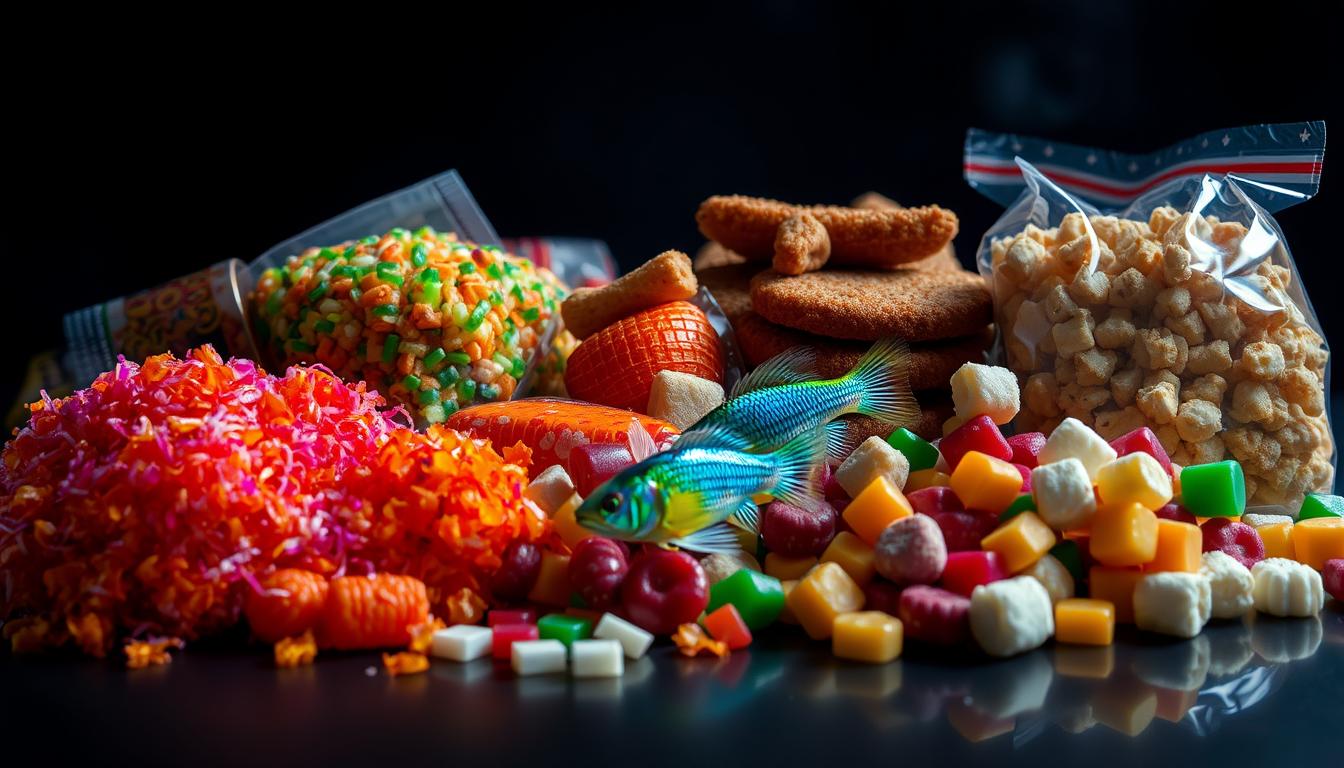What Can You Feed Molly Fish From Home?
This post may contain affiliate links.
Are you wondering if you can supplement your mollies’ diet with food from your kitchen? Many aquarium enthusiasts face this dilemma, seeking to provide a varied and nutritious diet for their fish without relying solely on commercial foods.
Mollies are popular freshwater aquarium inhabitants known for their vibrant colors and energetic behavior. They are relatively easy to care for, thriving in water temperatures between 75-80°F (24-27°C), which is typical for many home aquariums.
Understanding what home foods are safe for your mollies can enhance their diet and overall health. This guide will explore the options available for feeding your fish using food you likely already have at home.
Key Takeaways
- Understand the dietary needs of your mollies to supplement their diet effectively.
- Learn about safe home foods that can be fed to your mollies.
- Discover how to prepare these foods for your aquarium inhabitants.
- Find out the best feeding schedules for maintaining a balanced diet.
- Explore both plant-based and protein-based home food options.
Plant-Based Home Foods for Mollies

Molly fish can thrive on a diet rich in plant-based foods from home, including a variety of vegetables and fruits. These foods not only provide essential nutrients but also help replicate the natural diet of mollies in the wild.
Leafy Greens and Vegetables
Leafy greens like spinach, lettuce, and kale are excellent for mollies. These can be blanched and finely chopped to provide essential vitamins and fiber. Vegetables such as zucchini, cucumber, and peas are also great options that can be easily prepared at home.
Blanching harder vegetables softens them, making them more digestible for your mollies. The high fiber content in these plant-based foods helps maintain healthy digestion and can prevent constipation issues.
Fruits That Mollies Can Eat
Fruits like small pieces of apple, banana, or berries can be offered occasionally as treats. However, they should be used sparingly to avoid water quality issues from excess sugar.
It’s worth noting that some mollies may show preferences for certain fruits over others, so experimenting with different options can help determine what your fish enjoy most.
Preparing Plant Matter for Your Molly Fish
Preparing plant matter properly involves thorough washing to remove pesticides, blanching to soften tougher vegetables, and cutting into appropriately sized pieces that your mollies can easily consume.
By incorporating these plant-based foods into your molly’s diet, you can help replicate the natural algae consumption that is an important part of a molly’s diet in the wild, keeping the water clean and your fish healthy.
Protein-Based Home Foods for Mollies

A well-rounded diet for mollies includes a variety of protein-based foods that can be easily prepared at home. As omnivores, mollies require a mix of proteins and vegetables to stay healthy. While commercial flakes and pellets provide a good base, supplementing their diet with homemade protein sources can enhance their nutritional intake and variety.
Cooked Egg Options
Hard-boiled egg yolk is an excellent protein source for mollies. Simply crumble the yolk into tiny pieces and feed them in small amounts. Egg yolks provide essential amino acids and nutrients that are beneficial for the health and growth of your mollies.
Meat and Seafood Alternatives
Small pieces of cooked, unseasoned chicken, turkey, or white fish can be offered occasionally as protein sources. Ensure they are thoroughly cooked and free from seasonings, oils, or additives. Seafood alternatives like tiny pieces of cooked shrimp or fish can also be given, mimicking the small crustaceans and invertebrates that mollies might consume in the wild.
Insect-Based Foods from Your Kitchen
For a more natural diet, small amounts of mosquito larvae (if collected from clean water sources) or fruit flies can be fed to mollies. These insect-based foods provide natural protein sources similar to what mollies might encounter in their natural habitats. Commercially available freeze-dried insects like daphnia or bloodworms can also be rehydrated and offered as protein-rich treats.
When feeding protein-rich foods to mollies, it’s crucial to monitor the amount given to prevent overfeeding, as these foods can quickly foul the water. Remove any uneaten portions after a few minutes to maintain water quality. By incorporating these homemade protein sources into your mollies’ diet, you can provide them with a more varied and nutritious diet.
Creating a Balanced Feeding Schedule
To keep your molly fish thriving, it’s vital to create a balanced feeding schedule that meets their nutritional needs. A balanced diet is crucial for maintaining the overall health and well-being of your mollies, ensuring they receive the necessary nutrients for optimal growth and development.
Daily Feeding Routine for Molly Fish
A daily feeding routine for molly fish involves offering small portions 2-3 times daily. This approach better mimics their natural grazing behavior and helps maintain water quality in your aquarium by preventing excess food from decomposing and creating ammonia spikes.
By feeding your mollies frequently in small amounts, you can ensure they receive the nutrients they need without overloading the aquarium with excess food.
Combining Home Foods with Commercial Options
Combining home foods with high-quality commercial options ensures your mollies receive a complete nutritional profile. While home foods provide variety, commercial foods offer essential vitamins and minerals that might be missing from home options.
Rotating between different food types throughout the week provides dietary variety and ensures mollies receive a wide spectrum of nutrients. This approach helps keep your mollies healthy and thriving.
Adjusting Diet for Breeding Mollies
For breeding mollies, increasing the protein content in their diet can help support the female’s increased nutritional needs during pregnancy and improve the quality of fry. Providing dense aquarium plants like water sprite and water wisteria as hiding spots can also increase the survival rate of newborn fry.
By adjusting their diet and providing a suitable environment, you can help ensure the health and well-being of both the mother and her offspring.
Foods to Avoid and Feeding Mistakes
When caring for mollies, it’s crucial to know what not to feed them. Poecilia sphenops, commonly known as mollies, have specific dietary needs that must be met to keep them healthy. Understanding what foods are harmful and common feeding mistakes can significantly impact their well-being.
Harmful Foods That Can Affect Molly Health
Certain foods can be detrimental to mollies and should be avoided. Processed human foods containing preservatives, salt, or artificial flavors are particularly harmful. Foods high in fat content can cause liver problems, and bread or starchy foods can expand in their digestive tract, leading to serious health issues.

Maintaining proper water quality is also crucial, as even small amounts of ammonia from decomposing food can be harmful to mollies. According to Charles Clapsaddle of Goliad Farms, a renowned molly hatchery, mollies have a very low tolerance for ammonia, which can result in clamping and shimmying.
Common Feeding Errors by Molly Owners
Molly owners often make feeding errors that can lead to health issues in their fish. Overfeeding is one of the most common mistakes, resulting in poor water quality, obesity, and other health problems. Offering food that’s too large for mollies to consume can lead to uneaten food polluting the tank.
Overfeeding Issues
Overfeeding can manifest in several ways, including cloudy water, algae blooms, and visible waste accumulation in the tank. Mollies with distended bellies or those that appear lethargic after feeding may be receiving an excessive amount of food. It’s essential to monitor their feeding habits and adjust accordingly.
| Feeding Error | Consequence | Prevention |
|---|---|---|
| Overfeeding | Poor water quality, obesity | Monitor feeding habits, adjust amount |
| Feeding large food | Uneaten food polluting tank | Offer appropriately sized food |
| Relying on single food type | Nutritional deficiencies | Vary diet with multiple food types |
Conclusion
A balanced diet is crucial for the overall health and well-being of your mollies, and can be achieved by combining home foods with commercial options. By understanding the natural dietary needs of mollies and replicating them with appropriate home foods, you can create an optimal feeding regimen. Providing a varied diet from home food sources can significantly enhance the health, coloration, and longevity of your Poecilia sphenops. Maintaining excellent water quality is also vital, as it is closely linked to the overall care of mollies. With proper feeding practices, your mollies can display vibrant colors and maintain active behavior in your aquarium.
By taking the time to prepare and offer appropriate home foods, you’re not only improving your fish’s quality of life but also deepening your connection to the aquarium hobby.
